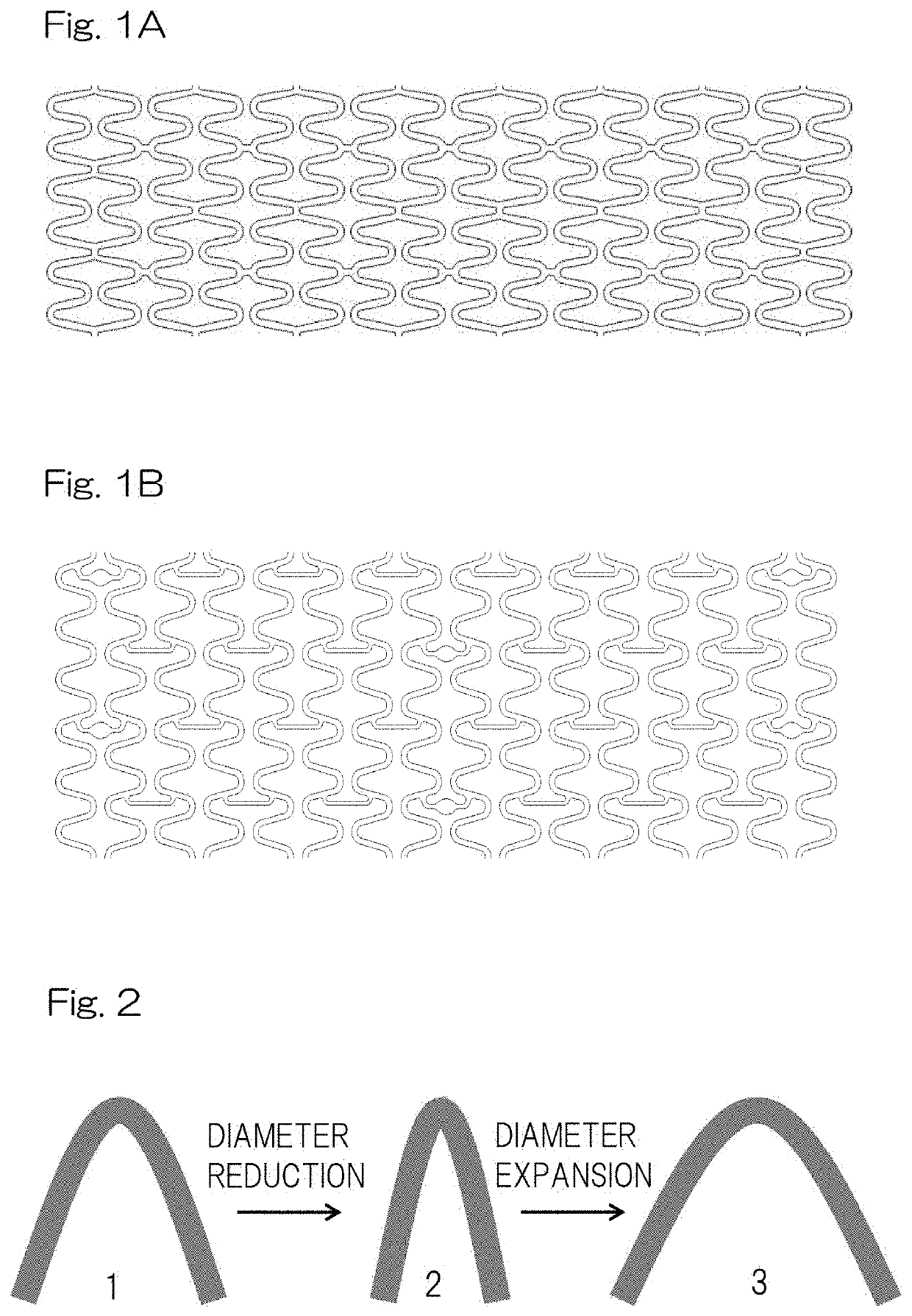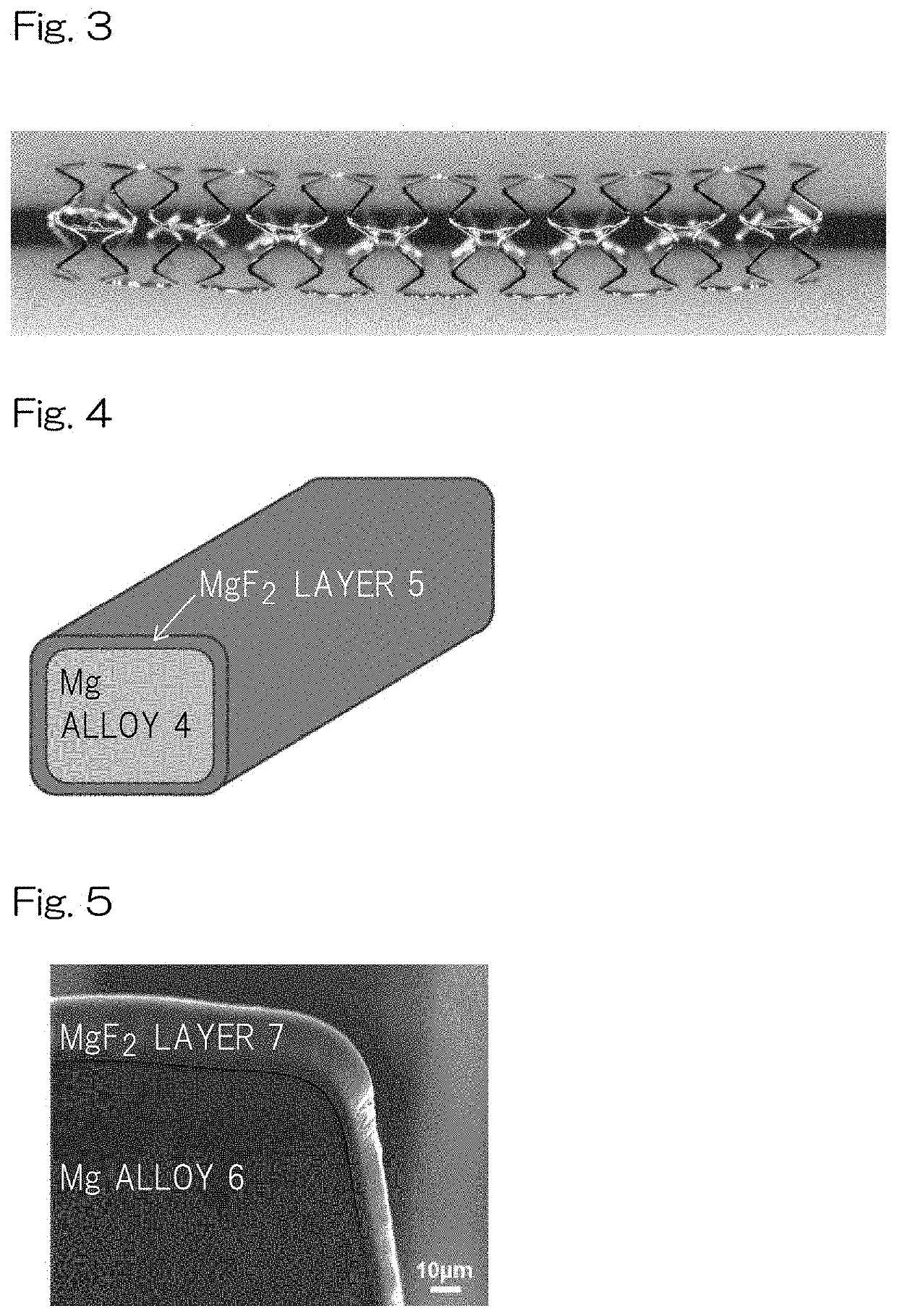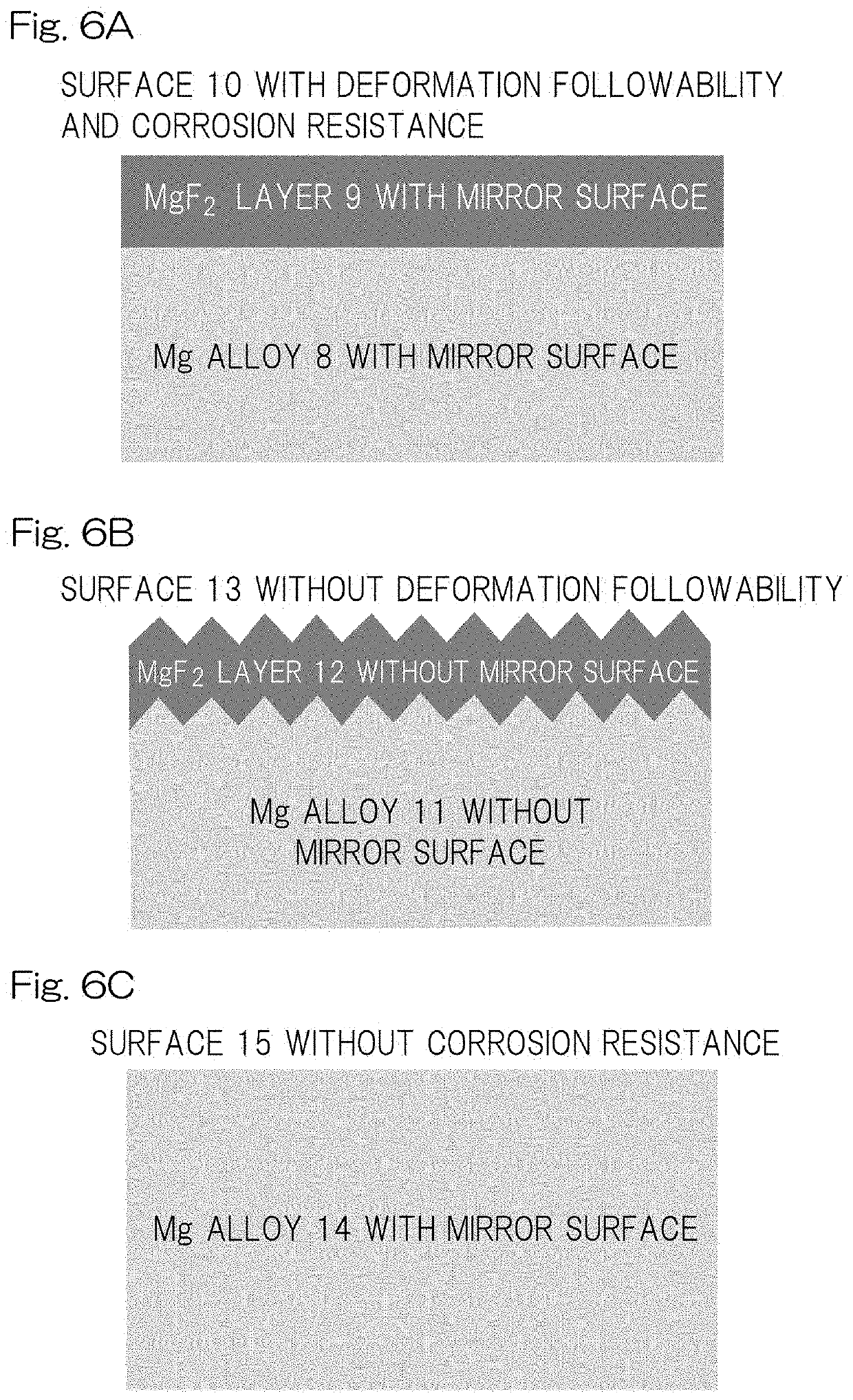High performance bioabsorbable stent
a bioabsorbable, high-performance technology, applied in the direction of prosthesis, surgery, coating, etc., can solve the problems of insufficient bearing power, inability to use stents, and insufficient radial force of blood vessels, and achieve excellent deformability, good capability, and excellent safety for humans
- Summary
- Abstract
- Description
- Claims
- Application Information
AI Technical Summary
Benefits of technology
Problems solved by technology
Method used
Image
Examples
example 1
[0122]A stent scaffold having an Ra of 0.57±0.18 μm was polished by electrolytic polishing so that the edge had a smooth (round) surface with an Ra of 0.05±0.01 μm, and then immersed in a 27 M hydrofluoric-acid aqueous solution (2 mL) and reciprocally moved at a rate of 100 rpm. Then, the stent was taken out after 24 hours, and subjected to ultrasonic cleaning sufficiently with acetone aqueous solution followed by drying the core structure for 24 hours at 60° C. under vacuum. The surface of the stent had a MgF2 layer with a thickness of not more than 10 μm as shown in FIGS. 4, 5 and 6A. The significant difference in Ra was not observed between before fluoridation processing and after fluoridation processing. After crimping thus-obtained stent sample in the balloon catheter, ethylene oxide gas (EOG) sterilization was performed to the prepared sample. A total of five samples were prepared on the same conditions as this condition.
example 2
[0123]A stent scaffold having an Ra of 0.57±0.18 μm was polished by electrolytic polishing to have an Ra of 0.20±0.01 μm, and then immersed in a 27 M hydrofluoric-acid aqueous solution (2 mL) and reciprocally moved at a rate of 100 rpm. Then, the stent was taken out after 24 hours, subjected to ultrasonic cleaning sufficiently with acetone aqueous solution followed by drying the core structure for 24 hours at 60° C. under vacuum. The surface of the core structure had a MgF2 layer with a thickness of not more than 10 μm as shown in FIG. 6A. The significant difference in Ra was not observed between before fluoridation processing and after fluoridation processing. At the end, after crimping thus-obtained stent sample in the balloon catheter, EOG sterilization was performed to the prepared sample. A total of five samples were prepared on the same conditions as this condition.
example 3
[0152]The disk sample (diameter of 5 mm and thickness of 1 mm) with an Ra of 0.05±0.01 μm was immersed in a 27 M hydrofluoric-acid aqueous solution (2 mL) and shaken at 100 rpm. After 24 hours the disk was taken out and fully washed ultrasonically with acetone aqueous solution, followed by dried at 60° C. for 24 hours under vacuum. A total of three samples were prepared on the same conditions as this condition.
PUM
| Property | Measurement | Unit |
|---|---|---|
| Ra | aaaaa | aaaaa |
| surface roughness | aaaaa | aaaaa |
| Ra | aaaaa | aaaaa |
Abstract
Description
Claims
Application Information
 Login to View More
Login to View More - R&D
- Intellectual Property
- Life Sciences
- Materials
- Tech Scout
- Unparalleled Data Quality
- Higher Quality Content
- 60% Fewer Hallucinations
Browse by: Latest US Patents, China's latest patents, Technical Efficacy Thesaurus, Application Domain, Technology Topic, Popular Technical Reports.
© 2025 PatSnap. All rights reserved.Legal|Privacy policy|Modern Slavery Act Transparency Statement|Sitemap|About US| Contact US: help@patsnap.com



